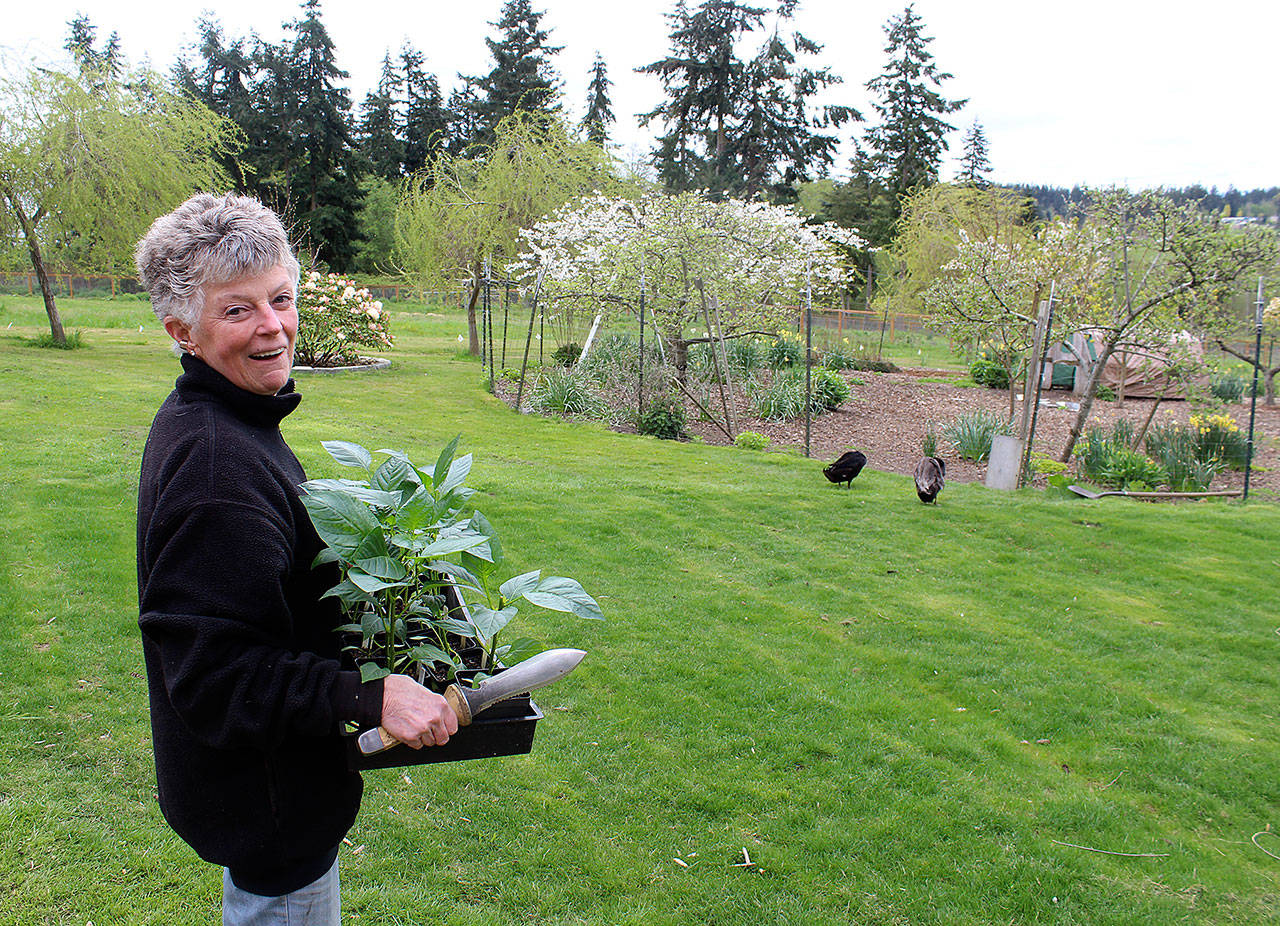Bigfoot is stepping out on Earth Day across Whidbey Island this year.
Sightings of the mythical Pacific Northwest nomad that started last month at local bus stops, kale fields and recycling centers were a clever marketing ploy of Taming Bigfoot Whidbey. It’s a friendly competition of teams that will start counting carbs on Earth Day, Monday, April 22.
Counting carbs isn’t about counting carbohydrates anymore, although it’s still a diet.
An energy diet, that is, one that involves cutting back on personal emissions of carbon dioxide, or CO2, that trap heat in the atmosphere and are the major culprit of global warming.
Taming Bigfoot campaigns to reduce an individual or household carbon footprint have been successfully carried out in Edmonds, Seattle and Jefferson County.
A carbon footprint measures the total amount of greenhouse gases produced to directly and indirectly support human activities. That means measuring movement, meals and meters of every day living — the gas in your tank, steak on your plate, kilowatts of household electricity, pounds of garbage.
And that can be tedious and time consuming.
“People get overwhelmed by the food data and how to calculate groceries and when they eat out,” Terra Anderson said Thursday morning to a group of 30 people who had signed up for the challenge. “Find a way that works for you. If you make this a task, you’ll drop out.”
The idea is for people to learn to slash their monthly carbon consumption, maybe by combining errands, taking the bus to work or eating fruit that’s in season and grown locally, she added.
“This is a learning experience on how to lower carbon using the carbon calculator and through discussions we’ll be having,” Donald Miller explained as he reviewed the online tools with participants.
Both Miller and Anderson are with Greening Congregations, a coalition of seven Whidbey churches concerned with environmental degradation.
It’s leading the three-month effort, along with Goosefoot, Whidbey Institute, Island Transit, Whidbey Watershed Stewards and South Whidbey Tilth. Whidbey Sun & Wind Renewable Energy Systems is a major sponsor.
For the first month, Bigfoot participants track their activities to get a baseline before attempting to lower carbon emissions for two months.
Nancy Hepp of South Whidbey is already a carb counter.
“I started riding a bicycle specifically to reduce my carbon footprint,” Hepp said. Over the years, she’s put more miles on her bike than her car.
It’s possible to get around most of Whidbey via bike and bus, added Janet Hall. That’s how the retired park interpreter commuted to her job at Fort Casey State Park for years. Some days, she pedaled the 8-mile trip both ways, other days she hopped the bus, then hopped on her bike.
Both women said they wanted to find out how their lifestyles contribute to the climate change crisis so they joined a Bigfoot team.
Anderson knows individuals can make a difference. About 20 years ago, she and her husband dedicated themselves to reducing their carbon footprint.
In 2009, after they both retired from Boeing, built an energy-efficient house, eliminated commuting and cut back on air travel, they cut their carbon load by more than two thirds.
Anderson also went gung-ho building several types of gardens, planting fruit trees. She added ducks for delicious eggs on the 10-acre spread she and her husband, Tom, tend.
“I grow all our fruits and veggies,” Anderson said, as she planted green peppers in the rich soil of her backyard earlier this week. “We changed our food habits. While we aren’t vegetarian, we use meat more for seasoning than as the main course, and we try to buy local/organic.”
“The challenge isn’t about shaming anyone,” Anderson added, “it’s about discovery.”
For more information: http://whidbeyccl.com/bigfoot
Taming Bigfoot Whidbey
— How much can you reduce your carbon footprint? Form a team, sign-up and find out. You’ll have three months to “Tame Bigfoot.” First calculate your carbon footprint, then take home a workbook to guide you through the process.
— For more information and help getting started, email gccwhidbey@gmail.com with Bigfoot in the subject line.
— Calculation workshop is 6 p.m. Monday, April 22 at Unitarian Universalist meeting house, 20103 State Route 525.
— Kickoff event and last day to register a Bigfoot team is Earth Day 7 p.m., Monday, April 22 at Unitarian Universalist meeting house, 20103 State Route 525.



